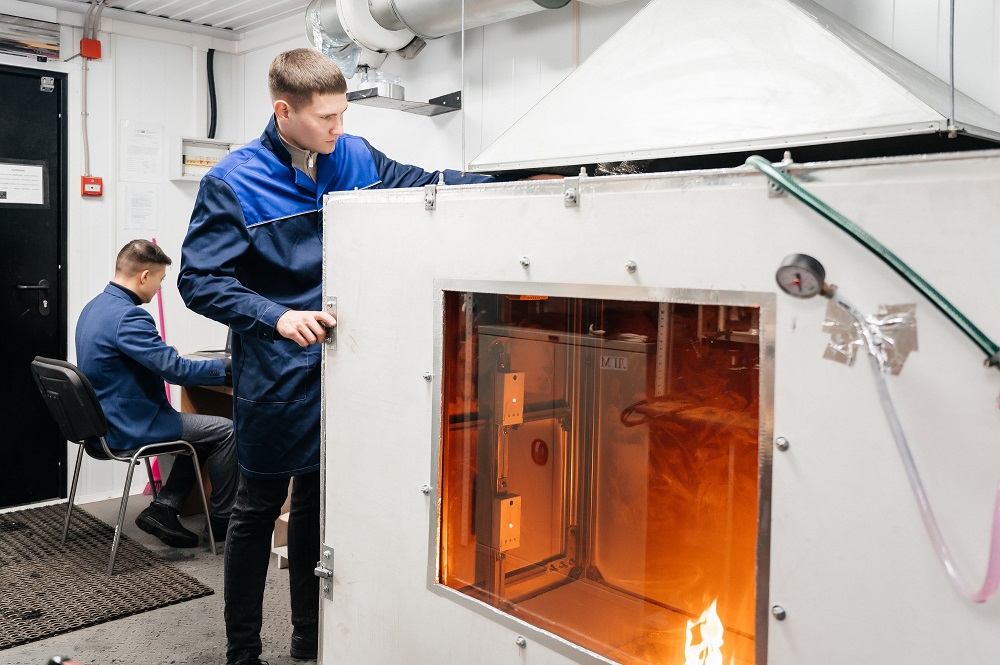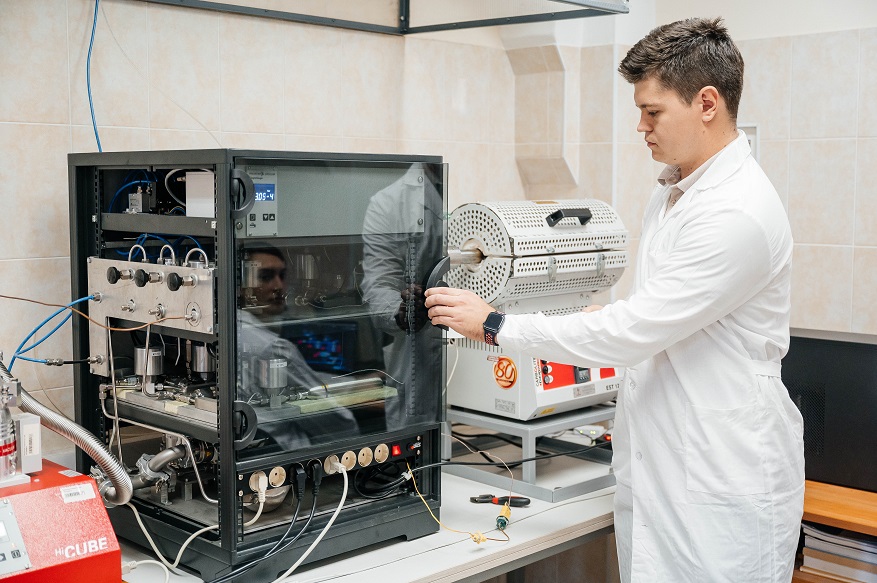The School of Advanced Engineering of Tomsk Polytechnic University is working on the development of a hardware and software system for detecting, localizing and eliminating fires at nuclear facilities. The system is based on neural network algorithms that make it possible to determine the cause, location and characteristics of the fire, fire development scenarios, as well as the extinguishing mechanism. The partner in the development of the complex is JSC Siberian Chemical Plant. The mock-up of the development was first presented at the XII St. Petersburg International Gas Forum.
Nuclear industry facilities have different categories of fire hazards, fire extinguishing compositions and conditions of their supply to the combustion zone are also different.
Any automatic fire suppression system is based on similar principles. In the nuclear industry, all buildings and equipment have different fire hazard categories: moderate, high, explosion, and so on. Because of this classification, the requirements for individual fire suppression systems in a given building can vary widely. In addition, the requirements for sensors and detectors used to identify and locate fires are also highly regulated and specific: they must be able to withstand not only high temperatures, but also, if necessary, radiation. Currently, there is no unified system for such objects, - says Roman Volkov, Associate Professor at TPU's Research School of Physics of High Energy Processes.
TPU scientists conducted more than 1,000 experiments on localization and suppression of combustion of a number of substances and materials: wood, PVC panels, linoleum, cable products, oils, alcohols, flammable liquids and others. For this purpose, they reproduced fire conditions in the most common situations: violation of the rules of operation of heating equipment, short-circuiting of electrical networks, local fire sources with limited heat content, overheating and ignition of electrical wiring, leakage and evaporation of oils and flammable liquids.
Based on the results of the conducted experiments, the scientists collected a large database and created and trained a neural network. Taking into account the peculiarities of the technological process, it can identify the cause of a fire or other emergency situation, the location, type and characteristics of the fire focus, as well as predict further patterns of event development and make recommendations on the most optimal mechanisms and methods of localization, extinguishing and extinguishing compositions. In addition, the developed complex will significantly minimize the damage and reduce the subsequent risks of fires in various industrial (power, nuclear, oil and gas) and public (residential and industrial premises, shopping centers, etc.) facilities.

So far, we have been experimenting with traditional materials that can be found in any industrial facility. However, since our task is to develop a fire detection and extinguishing complex for the nuclear sector, in November we will start a series of experiments with simulators of special substances. They are not radioactive, but they will allow us to learn how materials found exclusively in nuclear industrial facilities behave when ignited. It should be noted that work on the complex has only just begun, it is too early to talk about its implementation in a real enterprise of the nuclear sector and about the class of objects to which it will be applied, - says Pavel Strizhak, head of the heat and mass transfer laboratory, professor at the Butakov Research Center.
The neural network developed by TPU scientists can be used as a system for providing recommendations to firefighters on the characteristics and scenarios of an emergency incident at a nuclear facility, as a tool for investigating the causes of the fire. In addition, in the future, such a neural network can be integrated into an existing firefighting system as a tool for determining the most effective mechanism for locating and extinguishing a fire.
By the end of 2023, the scientists will present the first industrial prototype of the complex.

Reference
The Heat and Mass Transfer Laboratory has been actively researching effective firefighting technologies for seven years. During this time, scientists have developed systems that can effectively extinguish forest fires, as well as locate and extinguish fires in buildings and high-risk facilities. The laboratory team has successfully completed three major projects supported by the Russian Science Foundation and has published more than 50 articles in top international journals.



